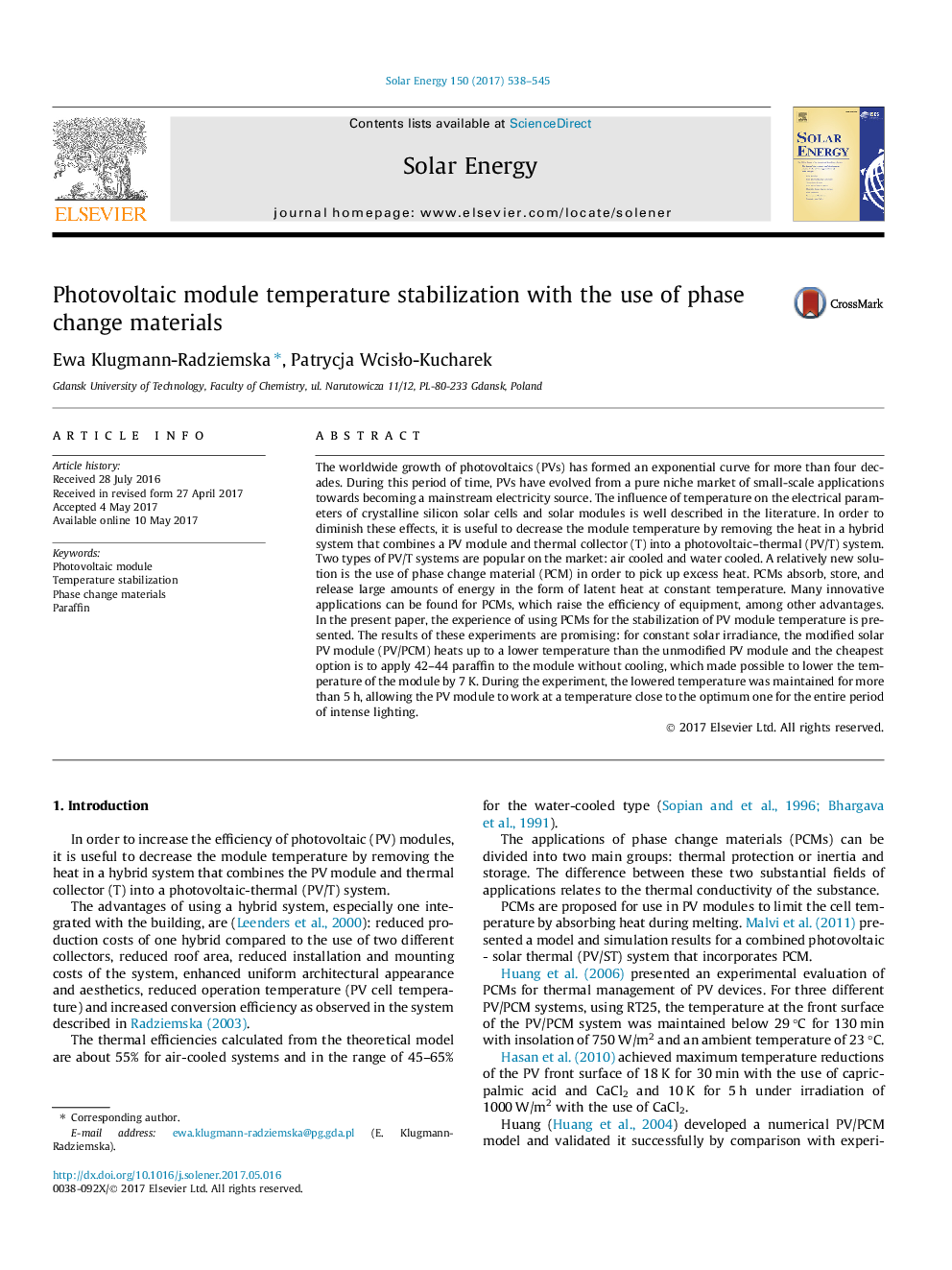| کد مقاله | کد نشریه | سال انتشار | مقاله انگلیسی | نسخه تمام متن |
|---|---|---|---|---|
| 5450822 | 1513068 | 2017 | 8 صفحه PDF | دانلود رایگان |
- The unmodified solar PV module heats up to a higher temperature than one in a PV/PCM system.
- The utilization of PCM constitutes a simple and low-cost method of removing heat from a PV module.
- The best results were obtained for the PV/PCM configuration with 42-44 paraffin.
- An appropriately selected PCM should be used for the PV module modification.
The worldwide growth of photovoltaics (PVs) has formed an exponential curve for more than four decades. During this period of time, PVs have evolved from a pure niche market of small-scale applications towards becoming a mainstream electricity source. The influence of temperature on the electrical parameters of crystalline silicon solar cells and solar modules is well described in the literature. In order to diminish these effects, it is useful to decrease the module temperature by removing the heat in a hybrid system that combines a PV module and thermal collector (T) into a photovoltaic-thermal (PV/T) system. Two types of PV/T systems are popular on the market: air cooled and water cooled. A relatively new solution is the use of phase change material (PCM) in order to pick up excess heat. PCMs absorb, store, and release large amounts of energy in the form of latent heat at constant temperature. Many innovative applications can be found for PCMs, which raise the efficiency of equipment, among other advantages. In the present paper, the experience of using PCMs for the stabilization of PV module temperature is presented. The results of these experiments are promising: for constant solar irradiance, the modified solar PV module (PV/PCM) heats up to a lower temperature than the unmodified PV module and the cheapest option is to apply 42-44 paraffin to the module without cooling, which made possible to lower the temperature of the module by 7Â K. During the experiment, the lowered temperature was maintained for more than 5Â h, allowing the PV module to work at a temperature close to the optimum one for the entire period of intense lighting.
Journal: Solar Energy - Volume 150, 1 July 2017, Pages 538-545
